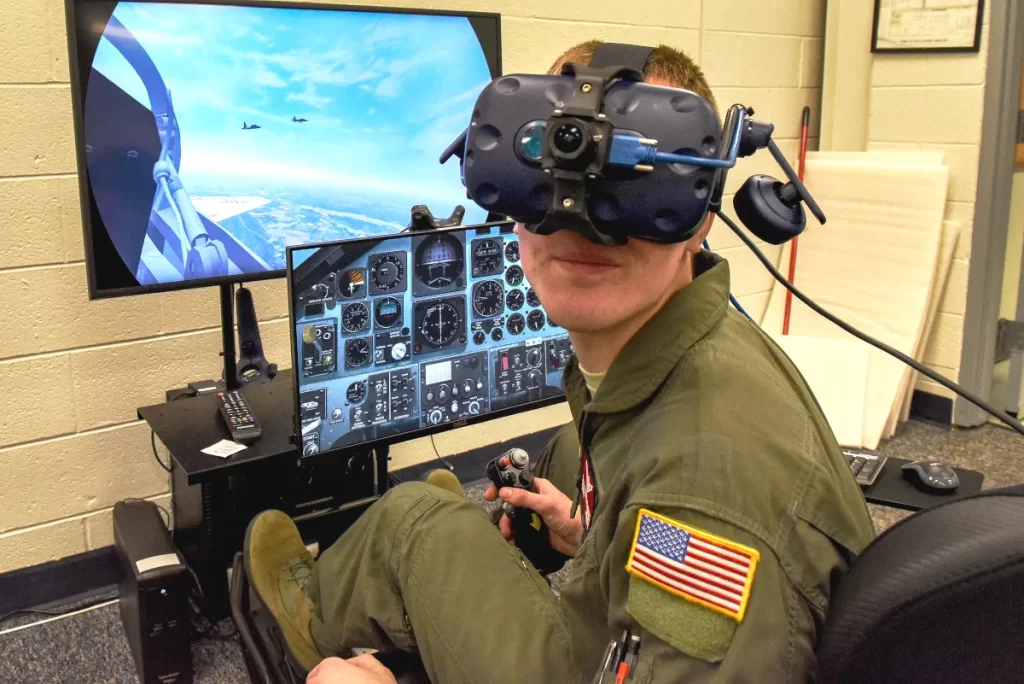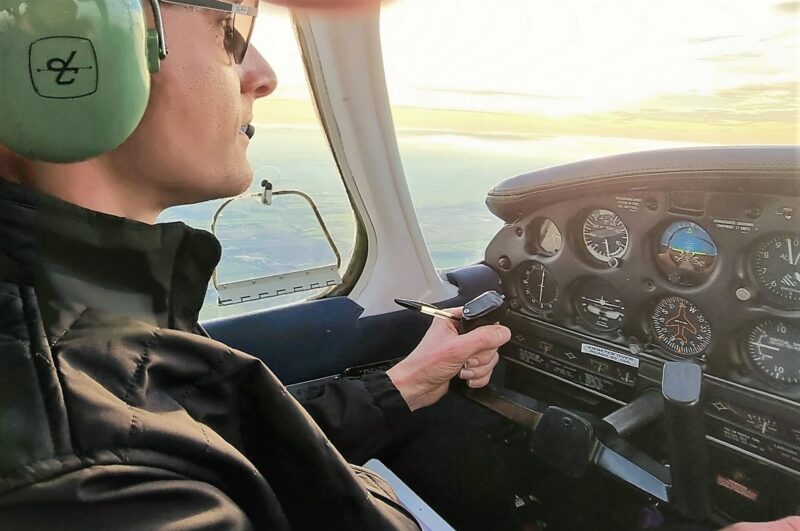Is Home Flight Simulator Flying Flight training Worth It?
1. Introduction

Is Home Flight Simulator Flying Flight training Worth It? It’s worth mentioning that modern flight simulators like X-Plane 12, MSFS 2024, and DCS World have made substantial strides, allowing pilots and enthusiasts to practice flying techniques from their own homes.
According to the FAA, simulators can account for up to 20 hours of logged flight training for a Private Pilot License (PPL) when approved, illustrating their recognized value in real-world training. This speaks volumes about their reliability and realism, despite the physical limitations compared to actual flying.
These simulators but be recognised by the FAA/CASA to be truly able to log hours but for just basic preparative practice the home sims can offer quite a bit of value.
2. X-Plane 12’s Realism

- Physics Modelling: X-Plane 12 uses blade-element theory for its flight model, breaking down forces on the wings, fuselage, and control surfaces into smaller elements that simulate aerodynamic interactions in real-time. This method, based on real aerodynamics calculations, results in accurate responses to inputs, environmental factors, and even aircraft-specific behaviours. While MSFS and DCS use proprietary physics engines, blade-element theory is considered one of the most precise approaches for small aircraft, particularly in low-speed flight (important for Light Sport and general aviation).
- Weather and Wind Effects: X-Plane 12 can simulate real-time weather downloaded from online sources, including wind, precipitation, cloud cover, and temperature. Crosswinds behave accurately, and statistics show that 15% of general aviation accidents are related to wind conditions during take-off or landing. Practicing crosswind landings at home allows pilots to become comfortable with these manoeuvres, reducing the risk of real-life incidents.
- Terrain Awareness and Topography: The simulator’s terrain data is based on real-world elevation, allowing pilots to practice take-offs and landings at airstrips with varying altitudes and slopes. This can be especially useful for Light Sport Pilots who often fly in less controlled, rugged environments.
- Latest CPU’s Available Now – Amazon.com
- Get a NEW GPU Best Performance – AMAZON.com
- Upgrade RAM Here today – AMAZON.com
- Prebuilt PC Options – AMAZON.com
3. Is Home Flight Simulator Flying Flight training Worth It? – VR’s Role in Flight Training

- Enhanced Situational Awareness: VR provides a field of view closer to human vision, helping pilots develop spatial awareness, especially during crucial phases like take-off, approach, and landing. Studies have shown that VR-based training can increase situational awareness by up to 30% compared to standard flat-screen simulators. The added realism of depth perception allows pilots to assess distances more accurately and become accustomed to spatial elements like altitude and descent rate.
- Training for High-Pressure Manoeuvres: VR can help simulate high-stress scenarios, such as low-visibility landings, where depth perception is critical. By practicing these scenarios in VR, pilots can improve their mental resilience, which has been shown to correlate with quicker reaction times and better decision-making under pressure.
4. Benefits of Practicing Procedures
- Emergency Procedures: According to the AOPA, improper handling of emergency situations contributes to a significant number of aviation incidents annually, with engine failures accounting for around 13% of accidents in small aircraft. Practicing these drills at home—especially after receiving training from a QFI—can enhance readiness and muscle memory.
- Checklist Familiarization: Mastering checklists for various stages of flight (e.g., pre-take-off, landing) can be done effectively in a simulator, building a habit that translates to real-life scenarios. Studies have shown that repetitive practice of procedural checklists can increase adherence by 45%, even in high-stress situations.
- Scenario-Based Training: By configuring the simulator to reproduce specific scenarios, like bad weather approaches or emergency landings, pilots can practice decision-making skills. Scenario-based training is especially valuable as studies indicate that pilots who engage in such training are 50% more likely to make timely decisions during real-life emergencies.

5. Is Home Flight Simulator Flying Flight training Worth It? – Limitations of Simulators
- Lack of Kinaesthetic Feedback: One of the main drawbacks of simulators is the absence of physical forces, which can make it harder for pilots to sense stalls or G-forces during steep turns and aerobatic manoeuvres. In real aircraft, pilots rely on subtle cues, such as pressure changes, vibration feedback, and the “seat of the pants” sensation. Without these, simulators can only approximate the experience, particularly for manoeuvres with high-G forces or subtle aerodynamic cues.
- Visual Resolution: While VR can approximate real depth perception, the resolution may still fall short for distant objects or small details, making it harder to see runway markings or distant landmarks with the same clarity as in real life. Visual acuity in VR has improved with modern headsets, but it’s not a full replacement for the eyes’ real-world performance.
- Complexity of Dynamic Situations: Factors like unpredictable passenger movements, weight shifts, and on-the-fly adjustments based on real cockpit instrument behaviour are difficult to replicate in simulators. These complexities mean that no amount of simulator time can fully prepare a pilot for the dynamic nature of real cockpit interactions.

6. The Balance of Simulator and Real Flight Training
- Training Cost Efficiency: Practicing at home can save a significant amount of money. The hourly cost of flying a Light Sport aircraft range between $100-$150 USD, including fuel and instructor time. Simulators reduce the need for repetitive airtime, saving student pilots money. An FAA study estimated that using simulators as a training tool could reduce training costs by up to 25%.
- Blending Theory with Practical Application: Rehearsing in the simulator allows pilots to refine their theoretical knowledge and gain confidence before applying it in real life. The combination of sim and real-world practice results in a well-rounded pilot. Experienced QFIs often report that students who have practiced in simulators typically require 10-15% fewer hours to solo than those who haven’t used them as a preparatory tool.
- Joystick / HOTAS – AMAZON.com
- Rudder Pedals – AMAZON.com
- Throttle Quadrant – AMAZON.com
- Gaming Chair – AMAZON.com
- VR Headset – AMAZON.com

7. Conclusion
Summarize by reaffirming that while simulators like X-Plane 12, especially when paired with VR, provide a robust training platform, they are best used as supplements to real flight training. For Light Sport and student pilots, simulators can teach essential skills, develop procedural discipline, and introduce complex scenarios, while real-life training fills in the gaps by providing tactile and kinaesthetic experiences that simulators cannot replicate.
Reinforce that a balanced approach—utilizing both simulator and real-world training—produces more skilled, safety-conscious pilots. Remind readers of the importance of humility and a commitment to continuous learning, a mindset essential for both safety and long-term growth in aviation.
With these technical additions, the post will not only offer practical insights but also provide readers with data-driven support for the benefits and limitations of simulator-based training. This added layer of detail should help readers understand both the value and boundaries of simulators, particularly for Light Sport and student pilots. Let me know if you need further refinement or specific statistics added.

Author
Brendon McAliece (Aka Gunnie) is a military veteran with 23 years working on Jet Fighters, their weapons systems and ejection seat/module systems as well as munitions and R&D. Involved with flight simulation since the 1980s, he has flown all the major flight simulators over the years.
He is an Australian expat who has lived in Malaysia, UK, Saudi Arabia and more recently Thailand. He is a multi-lingual blogger who loves to share his life experiences here on LetsFlyVFR.com and DreamingGuitar.com, with his lifestyle and Travel experiences Blog plus his Dreaming Coffee website.
Learn More @ DreamingGuitar.com – DreamingCoffee.com – LetsFlyVFR.com
( HOME – BLOG – SHOP – ABOUT )

Treat your significant other to a surprise?
Lots of options here AMAZON.com Most Popular Gifts!
As an Amazon affiliate I may benefit from qualifying sales.










One response to “Is Home Flight Simulator Flying Flight training Worth It?”